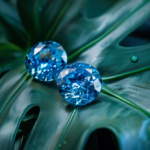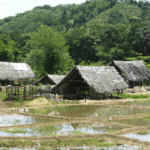Sri Lanka, often referred to as the “Gem Island,” boasts a rich history and tradition of gem mining that dates back over two thousand years. Known for producing some of the world’s finest gemstones, the island’s lush landscape is not only a paradise for tourists but also a treasure trove for gem enthusiasts. This blog post delves into the fascinating world of Sri Lankan gem mining, exploring its history, methods, and the enchanting gems that continue to capture the hearts of people around the globe.
A Historical Overview
Sri Lanka’s association with gem mining can be traced back to ancient times. Historical records indicate that gemstones from Sri Lanka were highly prized by royalty and nobility across the world. The island was known to the Greeks as “Taprobane” and to the Arabs as “Serendib,” both names evoking the allure of its riches. The Romans too had a great fascination with Sri Lankan gems, and there are accounts of these precious stones being traded extensively along ancient trade routes.
One of the most legendary gems to come from Sri Lanka is the Star of India, a stunning blue star sapphire now housed in the American Museum of Natural History. This gemstone, along with countless others, has helped cement Sri Lanka’s reputation as a premier source of high-quality sapphires and other precious stones.
The Gem Mining Regions
The main gem mining regions in Sri Lanka are concentrated in the Ratnapura District, often referred to as the “City of Gems.” Ratnapura, meaning “city of gems” in Sinhala, is located about 100 kilometers southeast of the capital city, Colombo. The region is renowned for its gem-rich gravel deposits, locally known as “illam.”
Other notable gem mining areas include Elahera, Balangoda, and Okkampitiya, each known for producing specific types of gemstones. These regions collectively contribute to Sri Lanka’s status as a leading gem producer in the global market.
Types of Gemstones Found
Sri Lanka is renowned for its sapphires, particularly the highly coveted blue sapphire. However, the island’s gem deposits are incredibly diverse. Other notable gemstones found in Sri Lanka include:
- Blue Sapphire: The most famous of Sri Lankan gemstones, prized for their rich, deep blue color and exceptional clarity.
- Padparadscha Sapphire: Known for its unique pinkish-orange hue, this rare sapphire is highly prized for its beauty and rarity.
- Ruby: Although less common than sapphires, Sri Lanka also produces beautiful rubies with vibrant red hues.
- Cat’s Eye: This gemstone, characterized by its striking chatoyancy, is highly sought after in the gem market.
- Spinel: Found in various colors, Sri Lankan spinels are known for their excellent clarity and vibrant hues.
- Garnet: Sri Lanka is home to a variety of garnets, including the popular red almandine and the rare orange hessonite.
- Topaz: The island produces topaz in various colors, with the blue and yellow varieties being particularly popular.
Traditional Mining Techniques
Gem mining in Sri Lanka is predominantly carried out through traditional methods that have been passed down through generations. The process begins with the identification of potential gem-bearing gravel deposits. Miners then dig pits or tunnels to reach the gem-bearing layers. These pits can range from a few meters to over 30 meters deep, depending on the location and the depth of the gem deposits.
Once the gravel is extracted, it is meticulously washed and sorted to separate the gemstones from the surrounding material. This process, known as “panning,” is done using a circular woven basket. The gravel is swirled in water, allowing the heavier gemstones to settle at the bottom while the lighter material is washed away.
Modern Advances and Ethical Practices
In recent years, the gem mining industry in Sri Lanka has seen significant advancements. Modern technology and equipment have been introduced to improve efficiency and safety in mining operations. These advancements include the use of mechanical excavators, water pumps, and advanced screening and sorting equipment.
Additionally, there has been a growing emphasis on ethical mining practices. The Sri Lankan government, along with various industry stakeholders, has implemented regulations to ensure sustainable and environmentally friendly mining practices. These regulations aim to minimize the impact of mining activities on the environment and local communities.
Ethical mining practices also extend to the treatment of workers. Efforts are being made to ensure fair wages, safe working conditions, and the protection of miners’ rights. Organizations such as the Sri Lanka Gem and Jewellery Association (SLGJA) play a crucial role in promoting ethical practices and setting industry standards.
The Path from Mine to Market
Once gemstones are extracted and sorted, they embark on a journey from the mines to the global market. The raw gemstones are typically sold to local gem traders, who then sell them to cutters and polishers. Sri Lankan gem cutters are renowned for their skill and craftsmanship, transforming rough stones into exquisite gems that sparkle with brilliance.
The finished gemstones are then traded in local and international markets. Sri Lanka has a vibrant gem trade, with the city of Ratnapura and the capital, Colombo, serving as major trading hubs. The island also hosts various gem exhibitions and trade shows, attracting buyers and enthusiasts from around the world.
A Gemstone for Every Occasion
Sri Lankan gemstones are not only admired for their beauty but also for their symbolic significance. Sapphires, in particular, are associated with wisdom, nobility, and good fortune. They are often chosen for engagement rings and other special occasions.
The enchanting padparadscha sapphire is seen as a symbol of love and passion, making it a popular choice for romantic gifts. Cat’s eye gemstones are believed to bring protection and good luck, while rubies are associated with vitality and prosperity.
Conclusion
Sri Lankan gem mining is a captivating blend of tradition, craftsmanship, and natural beauty. From the ancient pits of Ratnapura to the modern markets of Colombo, the journey of Sri Lankan gemstones is a testament to the island’s rich heritage and its enduring allure. As the industry continues to evolve with advancements in technology and ethical practices, Sri Lankan gems remain a symbol of elegance, resilience, and timeless beauty. Whether you are a gem enthusiast, a collector, or simply someone who appreciates the finer things in life, the gems of Sri Lanka offer a treasure trove of wonder and delight.






3 Comments
Lorem ipsum dolor sit amet, consectetur adipiscing elit, sed do eiusmod tempor incididunt ut labore et dolore magna aliqua. Quis ipsum suspendisse ultrices gravida. Risus commodo viverra maecenas accumsan lacus vel facilisis.
Cras maximus ultricies volutpat. Praesent ut enim non enim vulputate fringilla.
Cras maximus ultricies volutpat. Praesent ut enim non enim vulputate fringilla.